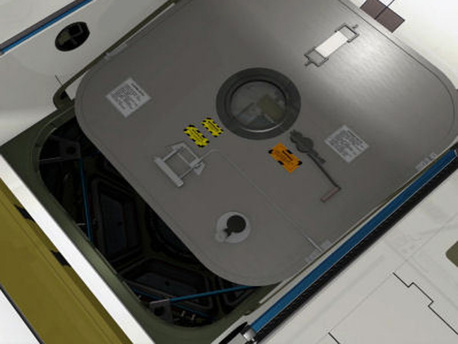Astronauts Enter Tranquility, Cupola
Astronauts Enter New Node-3 on ISS
 © ESA
|
Entering Node-3
After arriving at the ISS on Wednesday morning, a full day of activities and a 6.5-hour spacewalk by astronauts Nicholas Patrick and Robert Behnken, Node-3 was berthed at the left side of Node-1 on Friday morning.
The next milestone in bringing the Node and Cupola to full operation is the relocation of the Cupola, planned for the early hours of Monday February 15. The Crew already entered the Cupola for reberthing preparations this morning; opening the window shutters is planned for next Wednesday, when the Cupola will be in its final position on the Earth-facing port of Node-3.
Source: ESA
Astronauts Enter Tranquility, Cupola
Astronauts Enter New Node-3 on ISS
 © ESA
|
Entering Node-3
After arriving at the ISS on Wednesday morning, a full day of activities and a 6.5-hour spacewalk by astronauts Nicholas Patrick and Robert Behnken, Node-3 was berthed at the left side of Node-1 on Friday morning.
The next milestone in bringing the Node and Cupola to full operation is the relocation of the Cupola, planned for the early hours of Monday February 15. The Crew already entered the Cupola for reberthing preparations this morning; opening the window shutters is planned for next Wednesday, when the Cupola will be in its final position on the Earth-facing port of Node-3.
Source: ESA






